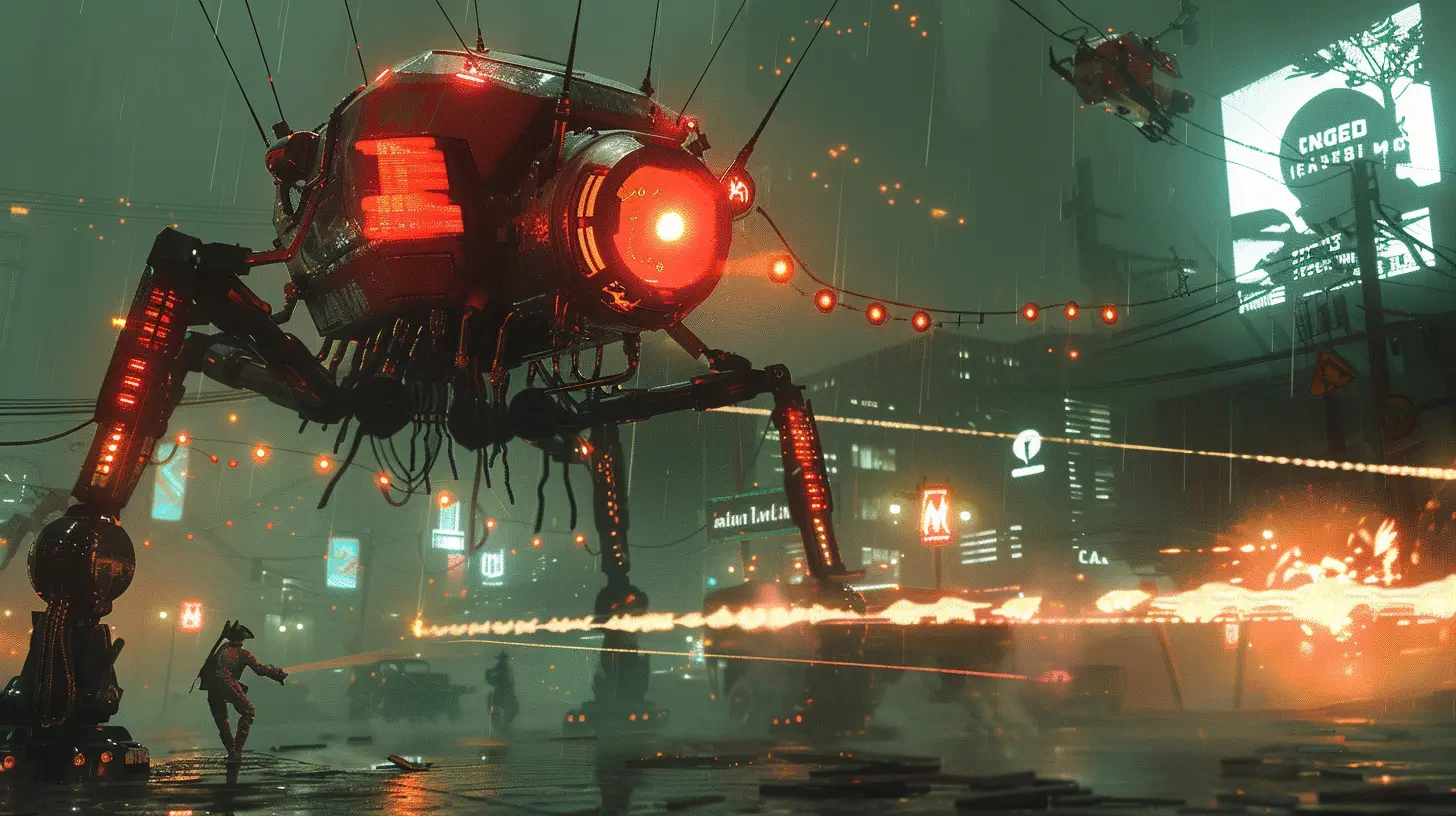AI in Game Development: Designing Smarter, More Engaging Enemies
26 July 2025
Have you ever been in the middle of an intense video game session and thought, "Wow, this enemy is way too predictable"? We’ve all been there. Those moments when the villain charges at you in the exact same way every. single. time. It’s not just boring—for gamers, it’s downright immersion-breaking. But here’s the thing: it doesn’t have to be that way. Thanks to artificial intelligence (AI), game developers are leveling up enemy behavior, making them smarter, more unpredictable, and way more fun to take down.
If you’re curious about how AI is changing the way enemies in games interact with us, you’re in for a treat. Let’s dive into how this magical tech is reshaping game development and making every boss battle worth the sweat.
What Is AI in Game Development?
Before we jump into the nitty-gritty, let’s cover the basics. AI, or artificial intelligence, is the simulation of human intelligence by machines. In the context of gaming, it’s all about creating systems that make in-game characters—especially enemies—act in believable, dynamic, and challenging ways.Think about it. AI isn’t just for sci-fi movies or powering your iPhone’s Siri. In gaming, it’s the secret sauce behind enemies that flank you, hide when they’re low on health, or adapt to your every move. It’s all about creating enemies that feel alive—like they’re actually thinking on their own.
Why Smarter Enemies Actually Matter
Okay, but why should we care if enemies are smarter? Can’t we just enjoy blasting away at mindless drones? Sure, that works for a while, but smarter enemies add so much more to the experience. Here’s why:1. Challenge and Fun: Games are, at their core, problem-solving activities. When an enemy adapts to your tactics, it forces you to think outside the box. It keeps you engaged. It’s like a game of chess, except your opponent has claws or laser cannons.
2. Immersion: When enemies behave in a way that feels natural—taking cover, retreating, or even outsmarting you—it pulls you deeper into the game world. It feels real.
3. Replayability: Dumb enemies? You figure them out in one playthrough, and suddenly, the magic’s gone. Smart enemies? You might come back just to see how they’ll outwit you next time.
Key Techniques for Smarter AI in Games
So how do developers make enemies smarter? Let’s break down the most popular techniques transforming virtual adversaries from mere pixels to cunning foes.1. Finite State Machines (FSMs)
This one’s a classic. Think of FSMs as a set of rules or behaviors that an enemy switches between based on specific conditions. For example, a goblin in a game might start in a "patrolling" state. If it spots you, it switches to "attacking." Get too far away, and it might switch to "chasing."It’s simple and effective, but here’s the catch: FSMs can feel rigid, like a flowchart you can predict with enough trial and error.
2. Pathfinding Algorithms
Ever noticed how enemies don’t just run straight toward you but navigate around obstacles like trees, walls, or lava pits? That’s pathfinding in action. Algorithms like A* (pronounced "A-star") help enemies calculate the shortest, smartest route to get to you—or to run away. Say goodbye to enemies hilariously walking into walls. (RIP old-school AI glitches; we’ll miss you!)3. Behavior Trees
Behavior trees are like FSM’s cooler, more complex cousin. They let developers build more nuanced AI. For example, instead of just “attack if player is close,” a behavior tree might include checks for how much health the enemy has, what weapon they’re holding, and even what the player is doing.Imagine facing off against a knight who charges when you're vulnerable but retreats when you're on a rampage. That’s behavior trees at work.
4. Machine Learning
Ah, the pièce de résistance of AI. Machine learning takes things to a whole new level by letting enemies learn from their interactions with the player. For example, if you tend to always take cover to reload, an enemy could learn this pattern and rush you when you’re trying to hide. It's like fighting someone who's been watching and analyzing your every move. Creepy? A little. Cool? Definitely.
AI in Action: Real-Life Examples
If you’ve played games in the last decade, you’ve probably already faced AI-driven smart enemies. Here are a few standout examples:- "The Last of Us" Series: The AI in The Last of Us is a masterclass in making enemies feel alive. Human enemies coordinate attacks, flank you, and even call out to each other by name. It’s unsettling—and brilliant.
- "Middle-earth: Shadow of Mordor/War" (Nemesis System): Orcs in these games remember you. Injure one without killing them? They’ll come back for revenge and even taunt you about your past encounter. It makes every enemy feel personal.
- "Halo" Series: Grunts scatter when their leader’s killed. Elites regroup and strategize mid-battle. These small details create a dynamic battlefield that feels alive.
The Role of AI in Creating Emergent Gameplay
What’s "emergent gameplay," you ask? It’s when the unexpected happens—when a game surprises even its developers. AI is the driving force behind this. Because enemies are reacting dynamically, new and unexpected scenarios can unfold.Picture this: You’re in a stealth game, sneaking past guards. One AI enemy suddenly trips while chasing you, alerting a nearby patrol. Boom—chaos ensues, and suddenly, you’re in a firefight you didn’t plan. That’s emergent gameplay, and it’s all thanks to adaptive AI.
Challenges of Implementing AI in Games
Now, before we get too starry-eyed about AI, let’s talk about the challenges. Designing smarter enemies isn’t all smooth sailing.1. Performance Issues: AI calculations—especially for things like pathfinding or learning—eat up processing power. For huge games, balancing complexity and performance is no easy feat.
2. “Unfair” Enemies: Players hate losing, but they really hate losing to enemies that feel like they’re cheating. Developers have to strike a balance—smart enough to challenge, but not so smart that it feels impossible.
3. Development Costs: Creating advanced AI systems takes time, money, and expertise. For smaller studios, this can be a major hurdle.
What Does the Future Hold?
AI in gaming is still evolving, and the future looks bright (and a little intimidating). With advancements in machine learning, we could see enemies that adapt across multiple playthroughs. Imagine a boss that remembers how you beat them the first time and changes tactics for round two.We’re also looking at the rise of procedural AI—systems that generate entirely new behaviors on the fly. It’s like having a different game every time you play. Wild, right?
Wrapping Up: Why AI Makes Games Better
So, the next time you’re battling a boss that seems scarily good at countering your every move, take a moment to thank the hardworking devs behind the scenes. AI in game development is about more than just making enemies harder—it’s about making them more engaging, more lifelike, and ultimately, more fun.Because let’s face it: when an enemy has the intelligence to keep you on your toes, it’s not just a fight—it’s an experience. And isn’t that what gaming’s all about?
all images in this post were generated using AI tools
Category:
Game DevelopmentAuthor:

Greyson McVeigh
Discussion
rate this article
1 comments
Astraea Carrillo
What an insightful article! It’s exciting to see how AI is transforming game design by creating smarter, more engaging enemies. This innovation not only enhances gameplay but also elevates storytelling. Looking forward to more discussions on the future of AI in gaming!
August 26, 2025 at 3:37 AM

Greyson McVeigh
Thank you for your thoughtful comment! I'm glad you found the insights exciting—AI truly is revolutionizing game design and storytelling. Looking forward to more discussions!


